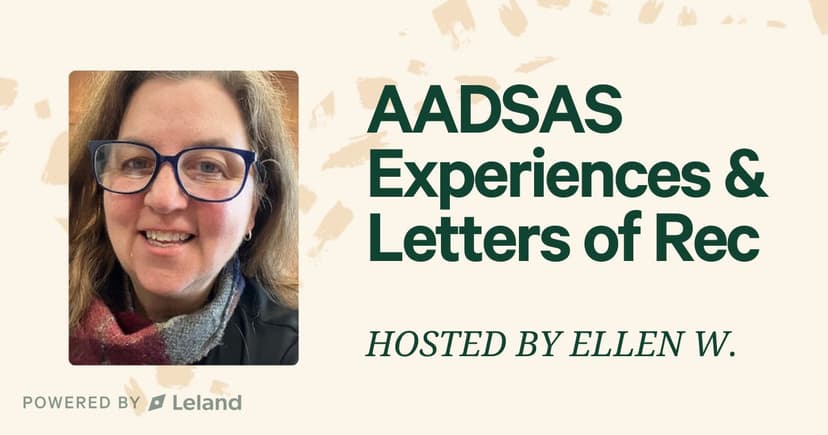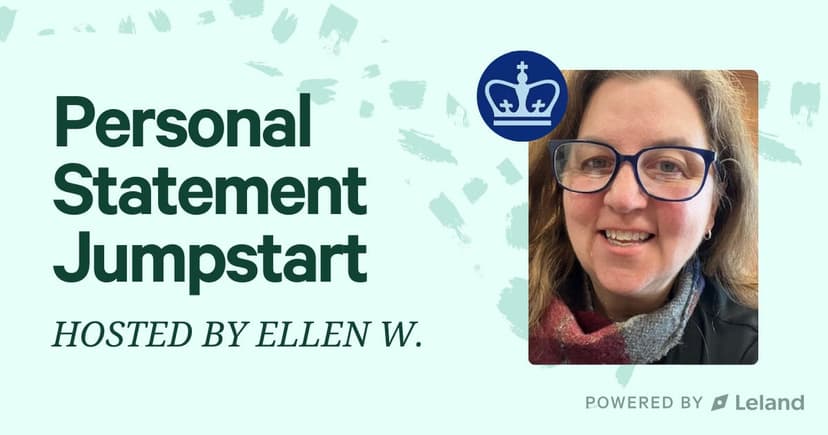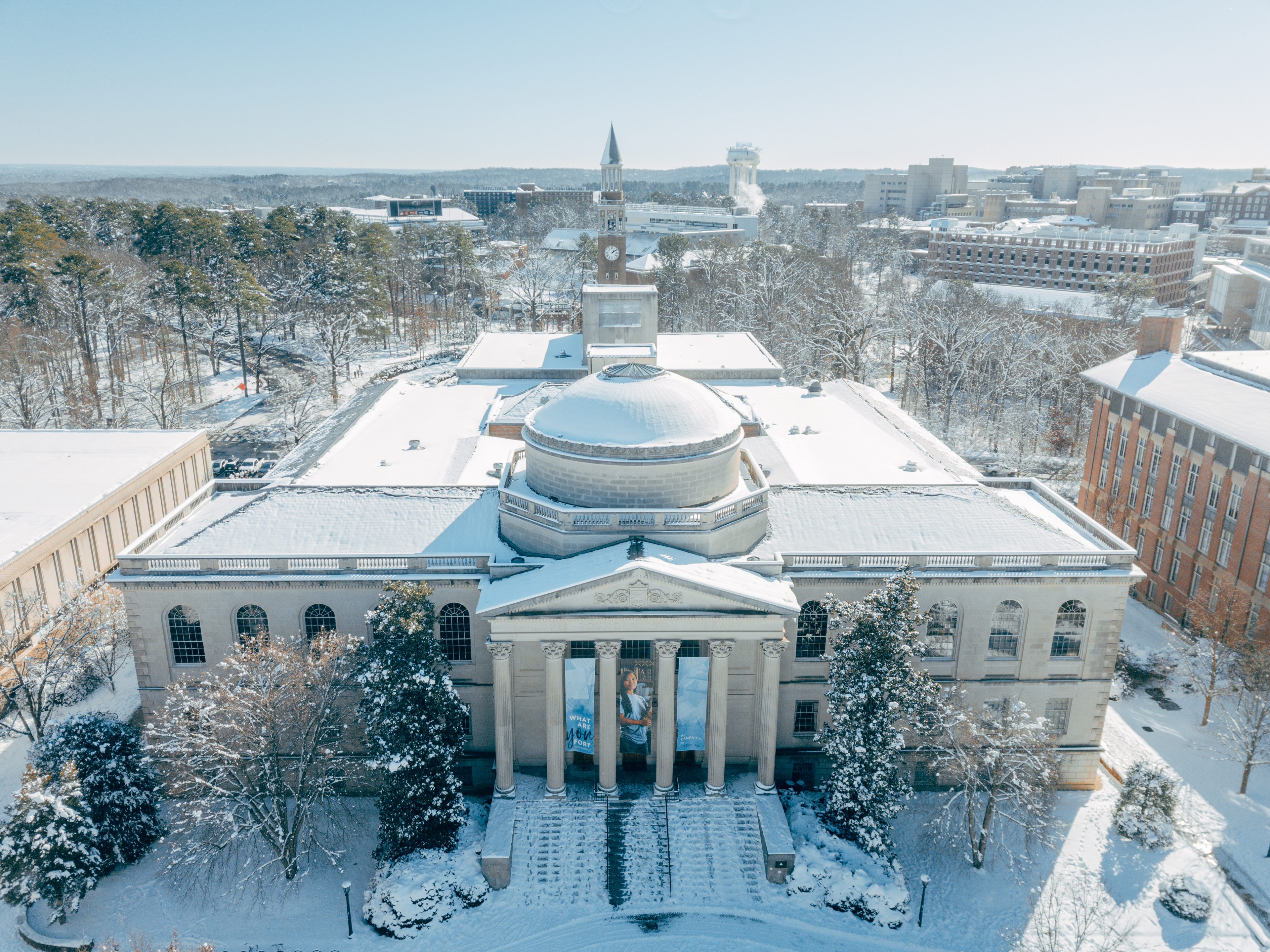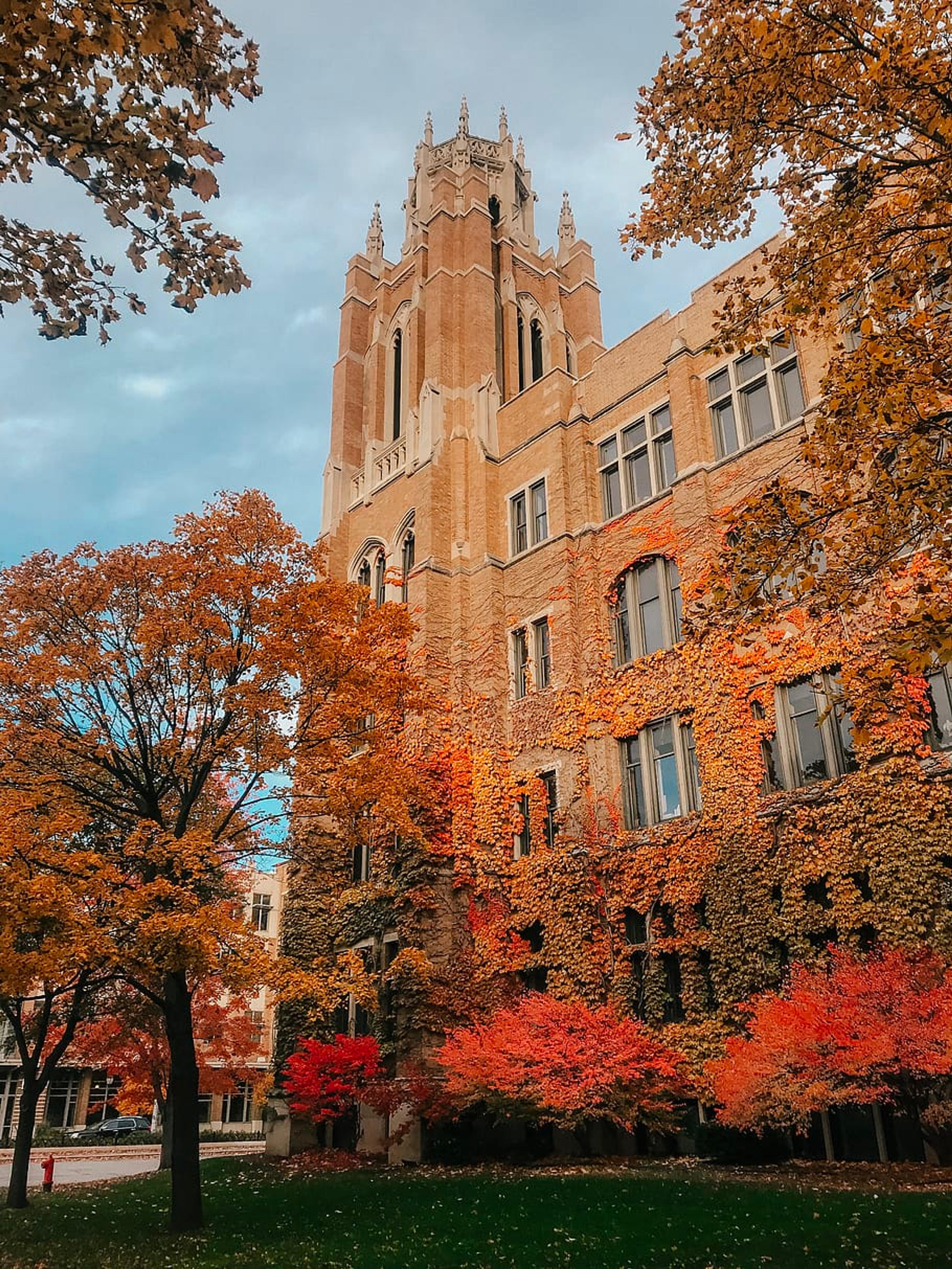How to Become a Dentist: Application, Degree Programs, FAQs
Are you thinking about pursuing a career as a dentist? Explore the career path to become a practicing dentist in our comprehensive guide.
Posted June 30, 2025
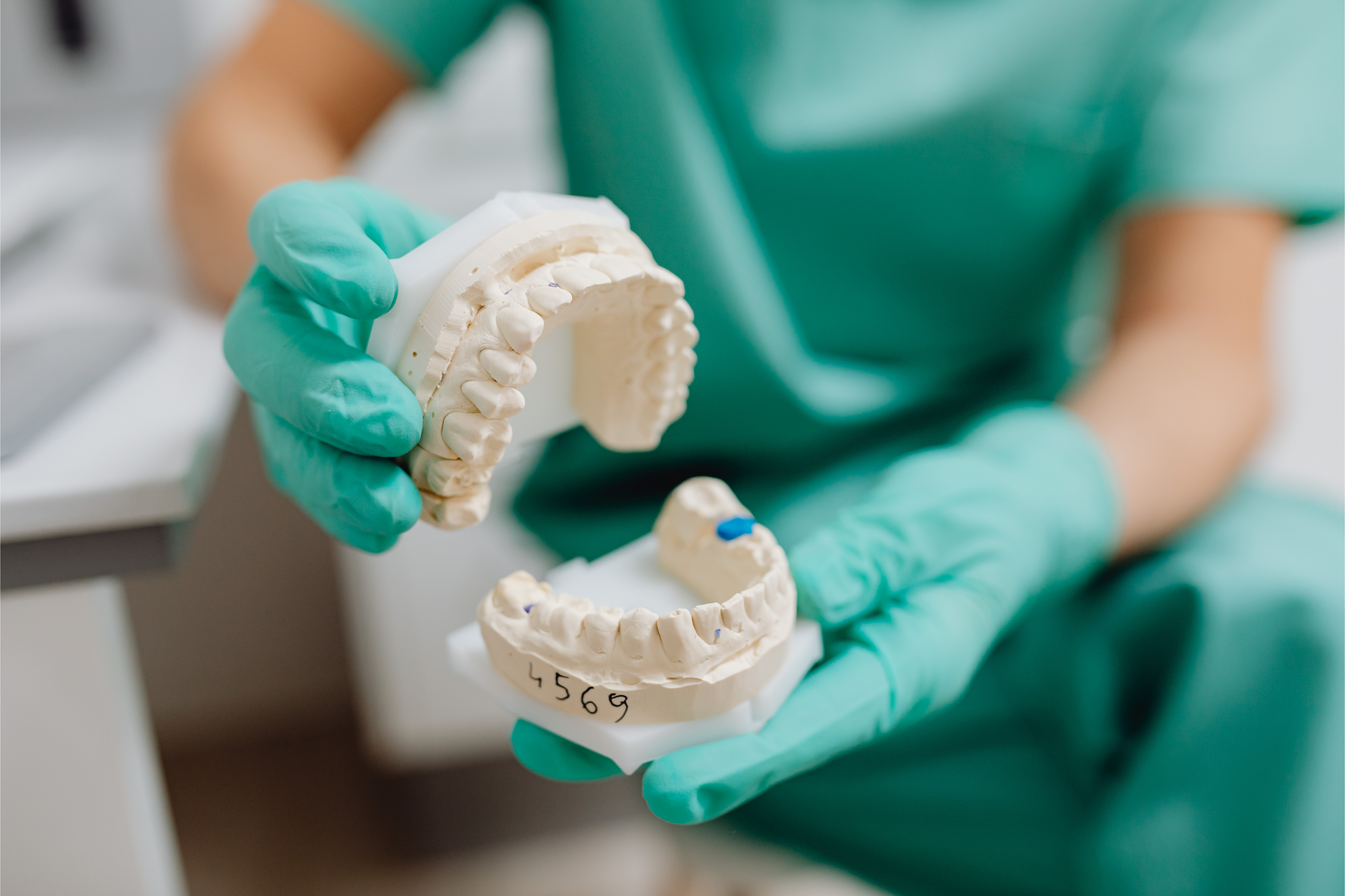
Join a free event
Learn from top coaches and industry experts in live, interactive sessions you can join for free.
Table of Contents
Dentistry is an exciting and engaging field that is constantly evolving. If you’re passionate about oral health, treating patients, and working with your hands, dentistry may be the right field for you. Learn more about the educational requirements, dental school application process, and dental profession below.
Is Dentistry Right for You?
Understanding the basics of the dental profession can be difficult, so it’s important to learn as much as you can about the field before committing to several years of schooling and the full dentist career path. As healthcare professionals, dentists must be comfortable working up close and under pressure, be compassionate and ethical towards patients, and have strong communication skills. You’ll also need to commit to a long and academically challenging education: most dental programs last four years, with intensive science-based curricula and additional training required for dental specialties.
Dental schools provide the academic foundation and clinical training necessary to become a general dentist, but you’ll also need to take the National Board Dental Examination (NBDE) to receive your license and begin practicing. For the specific licensure requirements of each state, check the American Dental Association dental licensure map.
As healthcare professionals, dentists are always in demand, with a median salary of about $159,000 per year. Dentistry is also a relatively flexible profession: many dentists own and operate their own private practices, which gives them a high level of autonomy in their hours, patient load, and management and high levels of job satisfaction. While most dentists go into general dentistry, some also choose to specialize in one of the twelve recognized dental specialties or complete a general practice residency or an advanced education in general dentistry program. You can also pursue a career in academic dentistry, research, public health, or global health, especially with many schools today offering opportunities to combine a dental degree with a Ph.D. or Masters in related fields.
DMD vs. DDS for Dentistry
You may have noticed that dentists can hold either a DMD degree, which stands for Doctor of Medicine in Dentistry, or a DDS degree, which stands for Doctor of Dental Surgery. Despite the different names and the Doctor of Dental Surgery being more common, the two degrees are essentially the same: they have the same standards for admission, and both prepare students for licensure to become general dentists.
Pre-Dental Undergraduate Studies
Your college or university years are the best time to learn more about the field of dentistry and tackle the prerequisites needed to apply to dental school. Try joining your school’s pre-health or pre-dental student organizations to learn more about dentistry. Another great way to learn more about dentistry is shadowing a dentist: you’ll get to see what the day-to-day life of a dentist is like, observe or aid in direct patient care, and possibly gain a recommender for your letters of evaluation. Some dental schools also require applicants to have completed a certain amount of dental shadowing hours, so it’s important to start looking into shadowing experiences early on.
While most dental programs do not have specific requirements for your undergraduate degree and welcome all majors to apply, you will need to fulfill certain academic requirements to demonstrate your scientific knowledge and ability to handle the difficult dental curriculum. Most dental schools require you to complete courses in general chemistry, biochemistry, biology, chemistry, physics, and mathematics. Some schools also have a minimum GPA requirement to demonstrate your ability to succeed under the academic rigor of dental school, and some require you to take social science or humanities courses to demonstrate strong communication skills and an understanding of the social determinants of health. Many programs allow you to apply as long as you have at least finished your junior year of college or university, but most dental students hold a bachelor’s degree.
If you’ve decided to go into dentistry after already graduating, you can enroll in a post-baccalaureate program to take any prerequisite courses you did not take in your undergraduate years. While it might take longer for you to fulfill certain requirements, a non-traditional route can actually help you stand out as an applicant, and most schools will not hold this against you.
Dental Curriculum
Most dental schools’ programs are four years long, with an emphasis on foundational biomedical sciences in the first two years and more hands-on practice with simulations and real patients in the last two years. The combination of didactic and clinical education gives students a strong understanding of medical concepts and plenty of training for working with patients of varying needs, such as special needs patients, children, and elderly patients. You’ll also take courses about the various aspects of dentistry as a career, such as owning and operating solo practices, joining group practices, and how the healthcare industry functions.
Biomedical Sciences
The courses that make up the first two years cover both the basic sciences and clinical sciences. Basic science courses include biology-based courses covering the structure and function of the human body and the oral and systemic diseases that affect it, chemistry-based courses on the mechanisms of chemical treatment, and physics-based courses about the mechanics of treatment procedures. Clinical sciences are more dental-oriented and familiarize students with oral diseases, the structure of the oral cavity, and the anatomy of tissues in the mouth.
Preclinical and Clinical Training
Preclinical and clinical experiences often include team-based training to simulate the ways dentists practice in the real world. Preclinical simulations familiarize students with the oral cavity (the teeth, mouth, gums, and tongue) and include procedures such as extracting teeth and performing a root canal. Students train and provide oral health care services such as cleanings, screenings and diagnoses, and implants in general dentistry through teaching clinics and the dental specialties through rotations at specialty clinics as part of a team of dentists, dental hygiene students, and/or residents.
Most schools require students to complete both community service rotations and specialty rotations in their last two years to contribute to oral health in the local community and learn more about the dental specialties they may go on to specialize in after graduating. Common rotations in dental school include oral surgery, pediatric dentistry, oral radiology, orthodontics, endodontics, special care dentistry, and hospital dentistry. Service learning rotations often take place in rural and underserved areas, tribal dental clinics, and other underserved communities, in which students provide prevention, diagnosis, and treatment services for oral and systemic diseases and oral health education.
Licensure Exams
Dental programs also prepare students for the dental profession in the real world, such as obtaining licenses by taking the NBDE. The NBDE Part I is usually taken at the end of the second year, when students have completed most of their didactic courses, and covers gross anatomy, biochemistry, physiology, microbiology, pathology, and dental anatomy and occlusion. The NBDE Part II is taken in the last year of dental school and covers operative dentistry, pharmacology, endodontics, periodontics, oral surgery, pain control, prosthodontics, orthodontics, pedodontics, oral pathology, and radiology. Many programs also prepare students for the INBDE, which is taken in one part after graduating instead of in two parts during dental school.
Student Research
Many programs have extensive opportunities for students to get involved in basic, clinical, and translational research investigating oral diseases, materials for implants and dentures, public health policy, and more. Research opportunities include participation in faculty research projects, leading your own project, or taking on a research-oriented dual degree. Students often have the opportunity to publish their manuscripts in academic journals or present their work at regional, national, and international conferences.
Dental School Application
If your heart is set on dentistry, you’ll need to apply to dental school through the ADEA’s application service, the Associated American Dental Schools Application Service (AADSAS). All U.S. and Canadian dental schools use this application service, although if you are a Texas resident applying for in-state programs, you’ll need to apply through the Texas Medical & Dental Schools Application Services (TMDSAS).
AADSAS Deadlines (2025–2026 Application Cycle)
| Event | Date |
|---|---|
| Application Opens | May 13, 2025 |
| Application Submission Opens | June 3, 2025 |
| 1st Academic Update Window | Aug 13 – Sept 29, 2025 |
| 2nd Academic Update Window | Dec 1, 2025 – Feb 6, 2026 |
| Dental School Acceptances Begin | Dec 15, 2025 |
| Application Closes | Feb 6, 2026 (11:59 PM ET) |
| Final Deadline to Submit Transcripts | Feb 11, 2026 |
| Final Deadline for Evaluations & Verifications | Feb 12, 2026 |
These dates may be subject to changes, so check the official ADEA AADSAS page for the most up-to-date information. Many dental programs also have their own application deadlines, so make sure to check each individual school’s admission page.
AADSAS Application Sections
- Personal information
- You’ll fill out your biographical and contact information here
- You can also list manual dexterity activities, such as playing an instrument or sewing
- Academic history
- You’ll need to submit official transcripts from all colleges or universities you attended
- The ADA will send your DAT scores to the ADEA AADSAS and to any programs you apply for
- Supporting information
- This is the most important section of your application, as the materials here will demonstrate your passion for dentistry and give admissions committees a general sense of what kind of dentist you will become
- You can submit up to four individual letters of evaluation, or three individual letters and one committee letter or packet
- Most programs require the committee letter or packet to come from your undergraduate institution’s pre-health committee
- Your individual recommenders can be a dentist you shadowed, a professor whose course you took, a research or volunteer experience supervisor, or an employer. However, many programs have their own requirements for who your recommenders are, so see each school’s admissions page
- You’ll also need to write a personal statement explaining why you want to pursue dentistry. Keep your statement general, as it will be sent to every school you apply to
- You may also submit any extracurricular activities here, such as shadowing hours or student organization experiences
- Program materials
- Some programs may require you to submit additional materials here, such as school-specific essays or documents
- You may also be required to submit a supplemental application through a school’s own application portal. These usually include additional short essays
Taking the DAT
The Dental Admission Test (DAT) is a standardized test required for admission into any dental program, which is administered by the ADA. The exam is two hours long and divided into the following sections:
- Survey of the Natural Sciences (100 questions): This section includes 40 Biology questions, 30 General Chemistry questions, and 30 Organic Chemistry questions
- Perceptual Ability (90 questions): This section is broken into six topics: Apertures, View Recognition, Angle Discrimination, Paper Folding, Cube Counting, and Spatial Relations/3D Form Development
- Reading Comprehension (50 questions): This section tests your ability to thoroughly read and analyze three scientific texts
- Quantitative Reasoning (50 questions): This section evaluates your mathematical abilities in Algebra, Data Analysis, Interpretation, Sufficiency, Probability and Statistics, and Quantitative Comparison
The test is graded on a scale from 1 to 30 into three categories:
- Academic Average: A rounded average of your scores in Biology, General Chemistry, Organic Chemistry, Quantitative Reasoning, and Reading Comprehension
- Total Science: Your score on the Survey of the Natural Sciences section
- Perceptual Ability Test: Your score on the Perceptual Ability section
Dental Interviews
After completing your application, you may be invited to interview. While this isn’t a guarantee of admission, interviews are required for admission. Interviews were once mostly conducted in a traditional one-on-one format, but today, different dental schools vary widely in their interview formats. You may also be interviewed one-on-one virtually, asynchronously through an online tool, in a panel, or in multiple mini interviews (MMI).
The questions you’ll be asked will likely be a combination of behavioral questions, intended to get to know you as a person and your passion for dental medicine, and situational questions, to better understand how you’ll handle the day-to-day work of a dentist and providing oral health care.
Our Tips for Acing Dental Interviews
- Plan out your interview schedule and budget early on. Some schools offer housing support for interviewees, so make sure you take advantage of those resources
- Research the values of each school you are interviewing with. Your interviewers will be looking for the unique ways you’ll contribute to the incoming class and what kind of dentist you will become in the future
- Come with questions. The interview is also your chance to learn more about each school and its offerings.
- Practice, practice, practice! Try practicing in mock interviews with an experienced admissions interviewer, such as one of our dental admissions coaches
Advanced Education Programs
After graduating with an initial degree in dentistry, you may choose to continue your education in general dentistry or pursue a specialty.
- General dentistry
- Programs available: 177 general practice residencies and 93 advanced education in general dentistry programs
- Average program length: 12 months
- Dental anesthesiology
- Programs available: 9
- Average program length: 36 months
- Dental public health
- Programs available: 15 certificates, master’s, and doctoral programs
- Average program length: 14 months
- Endodontics
- Programs available: 55
- Average program length: 26 months
- Oral and maxillofacial pathology
- Programs available: 14
- Average program length: 37 months
- Oral and maxillofacial radiology
- Programs available: 9
- Average program length: 24-36 months
- Oral and maxillofacial surgery
- Programs available: 101 certificate and MD programs
- Average program length: Four to six years
- Oral medicine
- Programs available: 6 residency, master's, and PhD programs
- Average program length: 24-36 months
- Orofacial pain
- Programs available: 12
- Average program length: 12-36 months
- Orthodontics and dentofacial orthopedics
- Programs available: 67
- Average program length: 24-36 months
- Pediatric dentistry
- Programs available: 82
- Average program length: 24-36 months
- Periodontics
- Programs available: 57
- Average program length: 35 months
- Prosthodontics
- Programs available: 47
- Average program length: 36 months
Final Thoughts: Your Path to a Career in Dentistry
Becoming a dentist is a long, challenging journey, but it’s also deeply rewarding. Whether you’re just starting to explore the profession or already knee-deep in prerequisites and personal statements, every step you take brings you closer to a career that blends science, service, and impact. The process may feel overwhelming, but you don’t have to navigate it alone.
Work 1:1 with a dental school admissions coach to build a competitive application, strengthen your narrative, and feel confident through every phase—from choosing schools to acing interviews. Browse top dental coaches here and find the right support for your journey.
For more information as you explore dentistry, check out these resources:
- The Complete Guide to the Dental School Application
- University of the Pacific Dental School: Application Requirements and Program Overview
- The Top 25 Dental Schools – and How to Get In
- University of Michigan School of Dentistry: An Overview of Admissions Requirements
- What Do You Learn in Dental School?
Dentistry FAQs
Can I practice in the U.S. if I am an international student with a dental degree from another country?
- Yes, but you’ll need to attend an advanced standing program designed for foreign-educated dentists first. These programs are usually two to three years long and integrated with the third-year DMD/DDS class.
Do I need research experience to apply?
- Research experience is generally not required, but recommended.
How can I find a dentist to shadow?
- Your college’s or university’s pre-dental student organization or pre-health committee may have alumni connections. You can also try cold-calling dentists in the area.
What are the best dental schools?
- There are no official rankings, as the combination of didactic and clinical education is difficult to quantify. There are 80 CODA-accredited schools that all provide rigorous education and training.
Browse hundreds of expert coaches
Leland coaches have helped thousands of people achieve their goals. A dedicated mentor can make all the difference.
